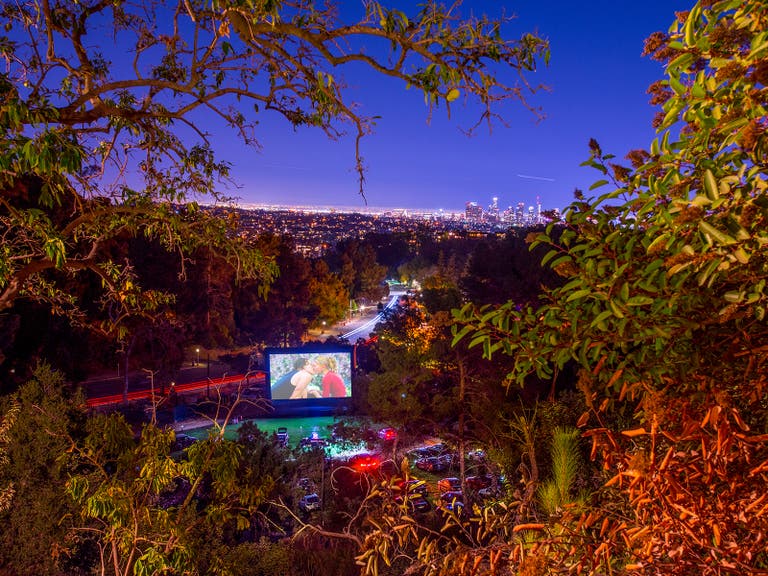The 48-Hour Guide to Multicultural Los Angeles
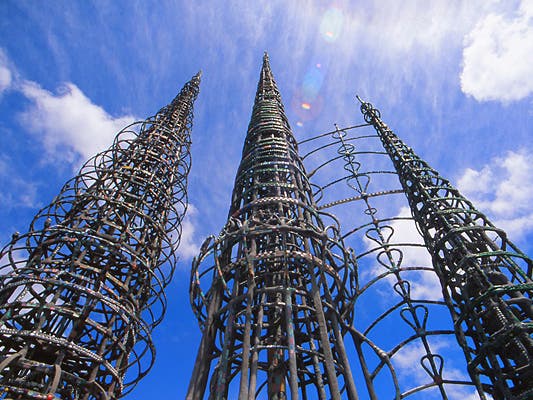
Los Angeles is one of the most diverse cities in the world, home to vibrant multicultural neighborhoods throughout the Greater L.A. area. Read on and discover a wide range of cultural attractions and cuisines with our 48-hour itinerary of global cultures in Los Angeles.





DoubleTree by Hilton Hotel Los Angeles Downtown
The home base for this 48-hour multicultural excursion is the elegant DoubleTree by Hilton Hotel Los Angeles Downtown. Nestled in the heart of Little Tokyo, the hotel features a unique Japanese-influenced interior design and the serene rooftop Kyoto Gardens. The garden and several suites feature breathtaking city views. The Weller Court Shopping Center, with restaurants, shops, a Japanese bookstore and an Asian supermarket, is conveniently adjacent to the hotel.


DAY ONE: 10 a.m. - WATTS TOWERS
Located about a half-hour drive south of Downtown L.A., the world-famous Watts Towers were built by Italian immigrant construction worker Sabato (aka "Sam" or "Simon") Rodia in his spare time over a period of 33 years, from 1921 to 1954. Rodia, a Watts resident, built the towers by himself, using only hand tools and window washer's equipment. The monumental sculpture was declared a National Historic Landmark in 1990, and hosts popular events such as the annual Day of the Drum Festival and the Simon Rodia Watts Towers Jazz Festival. The Watts Towers Arts Center provides diverse cultural enrichment programming through tours, lectures, exhibitions of local African American and international artists, and studio workshops for both teachers and students. The Charles Mingus Youth Arts Center presents programs to young area residents by expanding existing music classes offered through the Department of Cultural Affairs.

DAY ONE: 11 a.m. - CALIFORNIA AFRICAN AMERICAN MUSEUM
Located a few miles south of Downtown L.A. at historic Exposition Park, the California African American Museum (CAAM) exists to research, collect, preserve and interpret the history, art and culture of African Americans. The museum conserves more than 3,500 objects of art, historical artifacts and memorabilia. CAAM maintains a research library with more than 20,000 books and other reference materials available for limited public use.
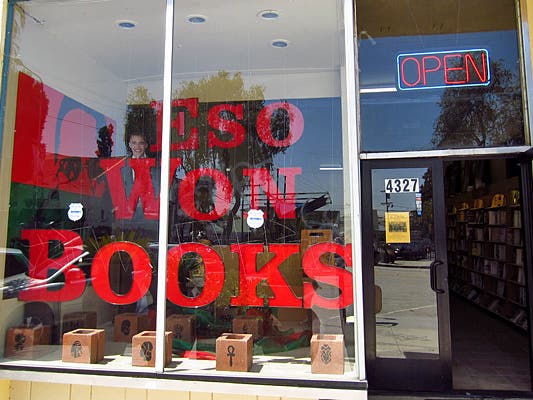
DAY ONE: 12:30 p.m. - LEIMERT PARK / ESO WON BOOKS
Leimert Park, an arts and cultural hub that filmmaker John Singleton referred to as the “Black Greenwich Village,” is located about a ten-minute drive from CAAM. Leimert Park features Art Deco buildings that house Afrocentric art galleries, shops, restaurants, theaters, nightclubs, and cultural centers. The village is also home to the historic Vision Theatre, a performing arts center that has served the community since 1931. The popular Leimert Park Art Walk is a free self-guided visual and performance art experience that takes place on the last Sunday of every month.
Eso Won Books is an independent bookstore located in the heart of Leimert Park Village. Meaning “water over rocks,” Eso Won “provides fluid, safe, stirring opportunities that flow to a reservoir of knowledge for all people to experience.” In addition to its wide selection of books, Eso Won hosts author events that have previously featured Presidents Barack Obama and Bill Clinton, Maya Angelou, Ruby Dee and many more.

DAY ONE: LUNCH - PHILLIPS BAR-B-QUE
In 1980, Louisiana native Foster Phillips opened his first barbecue parlor on the southeast side of Leimert Park. Now he douses red oak-smoked pork ribs, sliced beef, crusty ribs and coarse links with lip-stinging sauce at three Phillips Bar-B-Que locations. The owner isn’t big on seats, so expect to order from a window and grab your ‘cue to go. Plates come with white bread, which almost acts like a utensil. Sides are more traditional, including soupy baked beans, finely chopped cole slaw, and mac & cheese featuring an orange cheddar crust and matted ziti. Phillips also offers three kinds of greens: collard, turnip, and mustard. No matter what you order, consider sweet cornbread muffins or a trough of peach cobbler.

DAY ONE: LUNCH OPTION - LITTLE ETHIOPIA
Situated along a block-long stretch of Fairfax Avenue between Olympic Boulevard and Whitworth Drive, Little Ethiopia is a collection of restaurants and businesses that caters to the high concentration of nearby residents of Ethiopian and Eritrean ancestry. Ethiopian cuisine is characterized by spicy vegetable and meat dishes that are eaten by hand using torn pieces of injera (flatbread) to grab the food.
One of Little Ethiopia’s standard bearers is Meals by Genet, which is renowned for Genet Agonafer's doro wot - the traditional braised chicken stew described by Pulitzer Prize-winning food critic Jonathan Gold as the “Ethiopian answer to Oaxacan chicken mole” and “worth every minute of the three days it reportedly takes to prepare." Gold has named Meals by Genet to his annual list of 101 Best Restaurants and Agonafer was featured in his documentary, City of Gold.

DAY ONE: 2 p.m. - LACMA
Renowned as the largest art museum in the western United States, the Los Angeles County Museum of Art (LACMA) boasts an impressive collection of Asian and Pacific Islander art, including art from the regions of China, Japan, Korea, South and Southeast Asia and the Pacific. LACMA houses an entire pavilion dedicated to Japanese art, as well as a dedicated wing of Korean art in the Hammer Building. These significant eastern artworks cover a broad range of historical periods from ancient to contemporary. The museum’s strengths also include Latin American art, ranging from pre-Columbian masterpieces to works by leading modern and contemporary artists; and one of the most significant collections of Islamic art in the world.

DAY ONE: 4:30 p.m. - ORIGINAL FARMERS MARKET
Opened in July 1934, The Original Farmers Market at 3rd and Fairfax is beloved by locals and visitors alike. The bustling market features more than 100 multicultural specialty shops, produce stands, food vendors and sit-down restaurants. Browse the stalls and then unwind from the day’s activities with a beer at E.B.’s on the West Patio, or enjoy a glass of wine at Monsieur Marcel Gourmet Market.

DAY TWO: 9 a.m. - Manuel’s Original El Tepeyac Café
Start Day Two of your multicultural L.A. tour with a hearty Mexican breakfast at Manuel’s Original El Tepeyac Café, a Boyle Heights institution since 1955. Known simply as El Tepeyac by locals, this landmark is famous for massive burritos like the five-pound Manuel’s Special (as seen on Man vs. Food) and the Hollenbeck de Machaca. There’s usually a line, but whether you’re seated in the small, bustling dining room or order from the patio window, it’s well worth the wait for generous portions of classic breakfast dishes like Huevos Rancheros, Huevos con Chorizo and Chilaquiles.

DAY TWO: 10 a.m. - USC Pacific Asia Museum
One of only four U.S. institutions dedicated to the arts and culture of Asia and the Pacific Islands, the USC Pacific Asia Museum has a collection of more than 15,000 objects, spanning more than 4,000 years from the region of Persia to the Pacific Islands. Since 1971, the museum has furthered intercultural understanding through its focus on classic and contemporary arts of Asia and the Pacific Islands. Housed in the Grace Nicholson building in Pasadena, the Chinese-inspired architecture is a registered California State Historic Landmark. The museum’s courtyard is inspired by the classic gardens of China, where architecture is in harmony with nature. Dragons, the most important of the mythical beasts, can be seen perched on the ends of the roof. Lotus and peony flowers are strewn throughout, providing a visual feast for the eyes to all visitors.

DAY TWO: LUNCH - SALADANG SONG
For contemporary Thai, head to Wallaporn “Dang” Vattanatham’s pair of restaurants located just south of Pasadena’s Central Park. Saladang features more mainstream Thai dishes, while the newer Saladang Song features an elevated design and a more adventurous menu. Opened in 2000, Saladang Song features towering walls, an open-air patio and decorative metal framework. Some of the more progressive dishes include miang rambutan - lettuce cups filled with tofu, peanut, ginger, onion and coconut. Buns of rice vermicelli host grilled, marinated pork skewers bathed in tangy lime chili sauce. Seafood stars in coconut curry, and yum eggplant features grilled strips of eggplant and butterflied shrimp. For dessert, the restaurant has mango with sticky rice when the sweet fruit is in season, along with versions featuring sang-ka-ya, a custard that's similar to hot butterscotch, only less sweet.
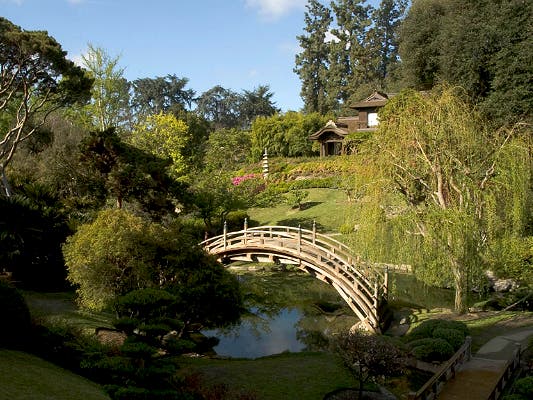
DAY TWO: 1 p.m. - HUNTINGTON LIBRARY
Renowned as one of the world’s greatest cultural, research and educational centers, the Huntington Library, Art Collections, & Botanical Gardens features must-see gardens themed from around the world. Among its most popular attractions are the Japanese and Chinese gardens. The Chinese garden, known in Chinese as ‘Liu Fang Yuan’ (or the Garden of Flowing Fragrance), offers a glimpse into the traditional style of scholar gardens from Suzhou, China. The garden complex is complete with pavilions, a teahouse and tea shop, stone bridges and waterfalls that together comprise a scenery evoking tranquility. The Japanese Garden includes a drum bridge, Japanese house, traditional Zen garden, expansive bonsai court, and a ceremonial teahouse and tea garden. Note: from Memorial Day to Labor Day, The Huntington observes summer hours and opens at 10:30 a.m. After Labor Day, The Huntington opens at noon.


DAY TWO: 2:30 p.m. - OLVERA STREET
Olvera Street in Downtown L.A. is one of the most popular tourist destinations in Los Angeles, located in the oldest district of the city as part of El Pueblo de Los Angeles Historical Monument. The colorful Mexican marketplace opened on Easter Sunday, April 20, 1930 following a preservation campaign that was spearheaded by Christine Sterling. Several of L.A.’s most historic buildings are located at Olvera Street, along with dozens of craft shops, restaurants and other businesses.
Olvera Street highlights include Avila Adobe (L.A.’s oldest house still standing in its original location), América Tropical (the only U.S. public mural by famed Mexican artist David Alfaro Siqueiros), and the Chinese American Museum. For more info, read our detailed guide to Olvera Street.
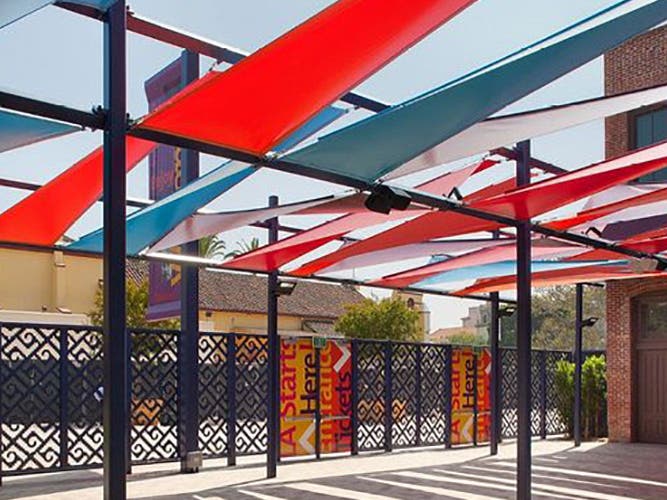
Day Two: 3:30 p.m. - La Plaza de Cultura y Artes
Located near the site where Los Angeles was founded in 1781, the 2.2-acre LA Plaza de Cultura Y Artes campus includes two historic and newly renovated buildings (the Vickrey-Brunswig Building and Plaza House) that are surrounded by 30,000 square feet of public gardens. Visitors can learn about the founding story of Los Angeles with interactive exhibits that focus on exploring Mexican and Mexican-American identity. “Voces Vivas” is a growing collection of video testimonials produced by LA Plaza staff, featuring Latino residents who tell their stories and struggles with cultural identity. On the top floor, “Calle Principal” reconstructs a typical main street in the 1920s. Visitors are invited to dress up in clothes from a department store, mix and crush herbs in a pharmacy and listen to a corrido, a traditional Mexican ballad.



DAY TWO: Happy Hour - FAR BAR
Located on 1st Street in Little Tokyo, Far Bar features a lively main bar with numerous flatscreens, dozens of craft beers on tap, and Asian-influenced cocktails and pub fare. A second bar is discreetly located next to the bar’s patio off 1st Street, featuring a massive list of hundreds of bourbons, single malts and Japanese whiskies. Far Bar hosts a popular daily happy hour (Tuesday-Friday from 3-7 p.m., Sunday-Monday 3 p.m. to close) that offers great discounts on beer, wine, sake, cocktails and bar snacks.

DAY TWO: DINNER - MARUGAME MONZO
Adjacent to the more well known Daikokuya is Marugame Monzo, an udon specialist that features a showcase window for diners to watch the cooks roll dough and skillfully slice the strands of udon. The freshly made noodles are offered in numerous hot and cold variations, including signature dishes like the rich, creamy Mentai Squid Butter Udon, which is infused with cod roe and a little kick of spice. The hearty Miso Carbonara Udon mixes Japanese and Italian influences in a viscous broth and topped with bacon. The Plum Shiso Bukkake Udon features cold udon noodles, plum paste, shiso leaf, scallions, and bonito shavings, served with raw grated ginger and a tiny pitcher of cold fish-based dashi broth that guests can add to taste.
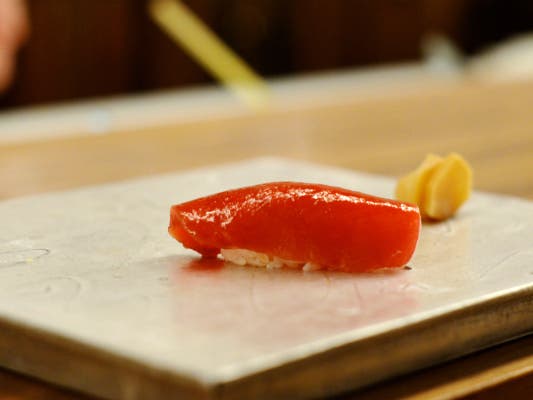
DAY TWO: DINNER OPTION - Q SUSHI
For a refined, high-end dining experience, Q Sushi features Chef Hiroyuki Naruke's interpretation of Edomae cuisine, a historical preparation that was the first to combine raw sashimi-style fish with vinegar-seasoned rice. Located on 7th Street’s thriving restaurant row, the intimate 26-seat restaurant mixes Japanese tradition with modern aesthetics in its elegant design. Naruke begins with tsumami (small appetizers) before serving multiple sashimi and nigiri sushi courses. A true master, Naruke coaxes optimal flavors from the fish using techniques such as nekaseru (aging), curing and adjusting temperatures just before serving. His attention to detail extends to the sauces, salts and garnishes applied to each particular fish, which vary by season and are imported from around the world. The omakase dinner starts at $165 for 20 courses and can climb well north, depending on fish selections and sake pairings.
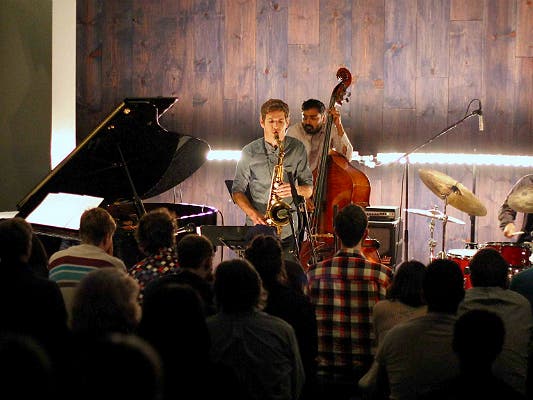
DAY TWO: NIGHTLIFE - BLUE WHALE
Los Angeles has been an important jazz city for decades, and the Blue Whale, located on the top level of Weller Court, continues that vibrant tradition. Guests enter from the all-glass facade and are greeted by a long, curved bar. Instead of tables and chairs, the main area offers blue cubes for seating. Mystical lyrics and artwork add to the creative atmosphere. Aficionados praise the Blue Whale for its eclectic lineup of forward thinking musicians, while performers enjoy the intimate setting and appreciative audience that includes a wide range of ages and cultural backgrounds.
